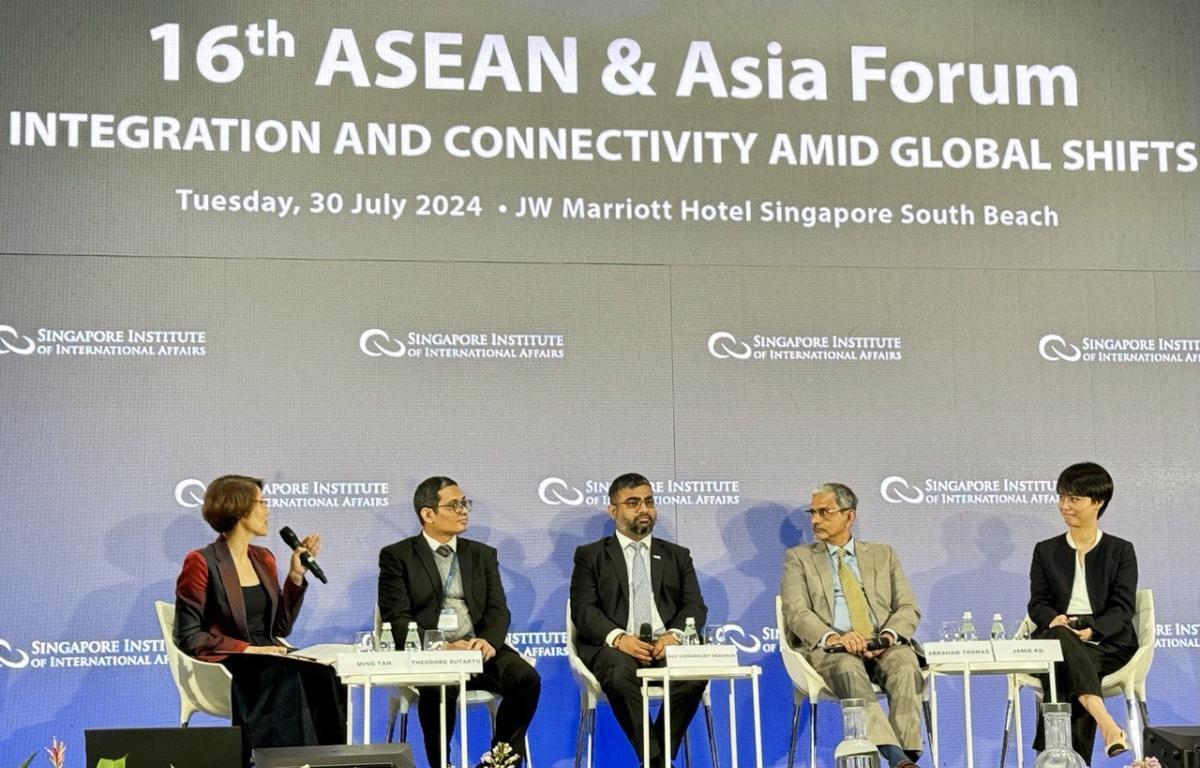
The accelerated adoption of digital technologies is dramatically reshaping economies and societies. With 100 million new internet users between 2019 and 2022 and a mobile-first and mobile-only behaviour with 130% mobile-internet penetration rate, the digital landscape is evolving at a breakneck pace. This transformation is not just about expanding access; it’s fundamentally altering user needs and expectations, as both businesses and individuals increasingly bypass traditional systems in favour of agile and digital-first solutions.
Given this rapid digital transformation, there is an opportunity to leverage this increased connectivity for a better future. A study conducted by the Tech For Good Institute, which involved over 130 participants from government agencies, digital economy companies (DECs), think tanks and civil society organisations across 6 Southeast Asian countries in 2023, reveals that there are common regional ambitions on how to use this increased connectivity for the greater good. This includes enhancing competitiveness, strengthening the resilience of micro, small, and medium enterprises (MSMEs), and improving public services. Efforts to achieve some of these ambitious goals have already started, with ASEAN’s 2021 Bandar Seri Begawan Roadmap (BSBR) setting out a comprehensive agenda to develop a robust and resilient regional digital economy.
While the BSBR has introduced key initiatives like seamless cross-border QR code payments and the ASEAN Unique Business Identification Numbers (UBIN) to enhance financial integration, technical interoperability, and trade connectivity, the newly negotiated ASEAN Digital Economy Framework Agreement (DEFA) stands out as a groundbreaking milestone. As a pioneering binding regional agreement, DEFA aims to enhance regional complementarity to foster economic growth and create a more inclusive and secure digital economy. In doing so, it holds the potential to add up to US$2 trillion to the region’s economy by 2030.
To ensure ASEAN’s digital trajectory remains on course, distinguished experts shared insights on maximising the potential of digital technologies to strengthen digital connectivity and unlock a brighter future for all.
Moderator and Panellists
- Ming Tan, Founding Executive Director, Tech For Good Institute
- Abraham Thomas, Managing Partner, IBM Consulting ASEAN
- Jamie Ko, Director of Regional Public Affairs and Policy, Grab
- Roy Choudhury Debarun, Head of Commercial and Money Movements Solutions for Regional Southeast Asia, Visa
- Theodore Sutarto, Assistant Deputy Minister, Coordinating Ministry of Economic Affairs of Indonesia
Key Takeaways:
1. Developing fit-for-purpose technological solutions to drive effective technology adoption.
To maximise the potential of digital technology, it’s crucial to address the inertia that often hinders adoption. This requires identifying and addressing real, pressing, and often overlooked needs of the communities and businesses that are being intended to serve, ensuring that digital tools are not just cutting-edge but truly beneficial. While innovative solutions should be advanced, they must also be fit-for-purpose, relevant, and accessible to the target users. By aligning technological solutions with genuine pain points, the value of digital tools can be clearly conveyed to users and become naturally embraced to create a positive cycle of adoption and improvement. Ultimately, this strategy paves the way for stronger digital connectivity and a brighter future, where technology serves as an enabler rather than a barrier to progress.
2. Empowering Southeast Asia’s MSMEs to fully unlock the potential of digital connectivity and drive regional economic integration.
Building a robust digital infrastructure is merely the first step in unlocking the full potential of digital connectivity. To truly harness the power of digital tools for cross-border business, digitalisation must empower the 71 million micro, small, and medium enterprises (MSMEs) in Southeast Asia which represent 97% of businesses in the region. These businesses form the backbone of many economies, yet often lack the resources and know-how to fully leverage digital platforms for international trade. The public and private sectors, including digital platforms, must act and collaborate to provide targeted support for MSMEs. This support should address the unique challenges faced by small businesses, such as limited resources for digitalisation, low digital literacy, cybersecurity concerns, and unfamiliarity with international regulations. By equipping MSMEs with the necessary skills and resources, they can fully engage in the region’s digital transformation and seize emerging opportunities to further drive the region’s economic integration.
3. Proactive governance and data-backed strategies should guide the first-of-its-kind DEFA.
As the first region-wide digital economy agreement globally, the DEFA represents a pioneering effort in digital governance. With no precedents to follow, policymakers must combine creativity, proactivity, and thorough research to shape DEFA strategies and maximise its potential. This approach entails anticipating future digital challenges and opportunities, rather than merely reacting to current issues. Moreover, governments should embrace proactive governance that extends beyond technical and business interoperability to ensure that their digital policies and frameworks are robust and resilient. By developing forward-thinking frameworks that address emerging technologies and cross-border digital interactions, ASEAN can position itself at the forefront of the global digital economy, unlocking new growth opportunities across the region.
4. Innovative and flexible policy tools needed to keep pace with technological advancements.
As technology evolves at an unprecedented rate, regulatory measures must adapt quickly to remain effective and relevant. This necessitates the development of flexible regulatory frameworks that can address current challenges and critical issues like cybersecurity and data protection while anticipating future developments. These policies should be designed with built-in flexibility to accommodate technological advancements without requiring constant revisions. For instance, balancing the benefits of AI with its potential risks, especially for MSMEs, could involve using regulatory sandboxes. These allow for the safe testing of AI applications under regulatory oversight, ensuring that data privacy and security are upheld throughout the innovation process. By crafting forward-thinking regulatory tools, governments can create an environment that fosters innovation while ensuring equitable growth and protection for all stakeholders.



